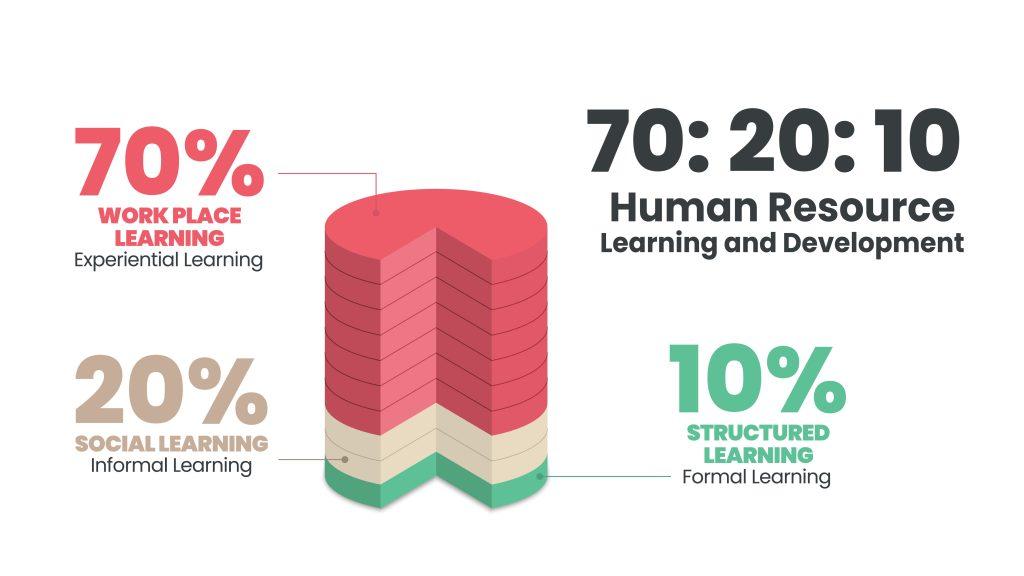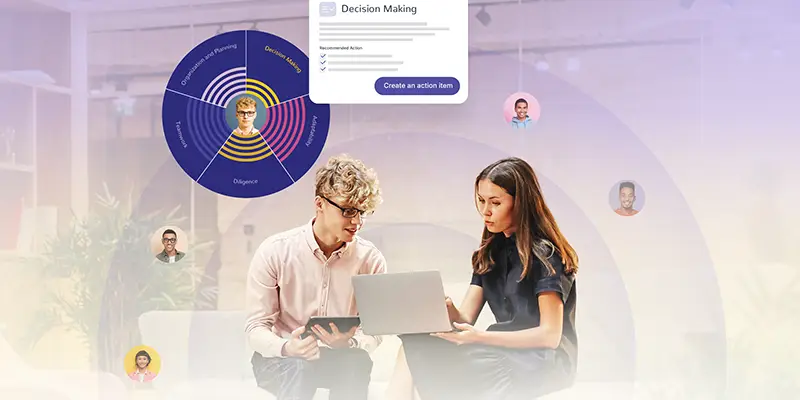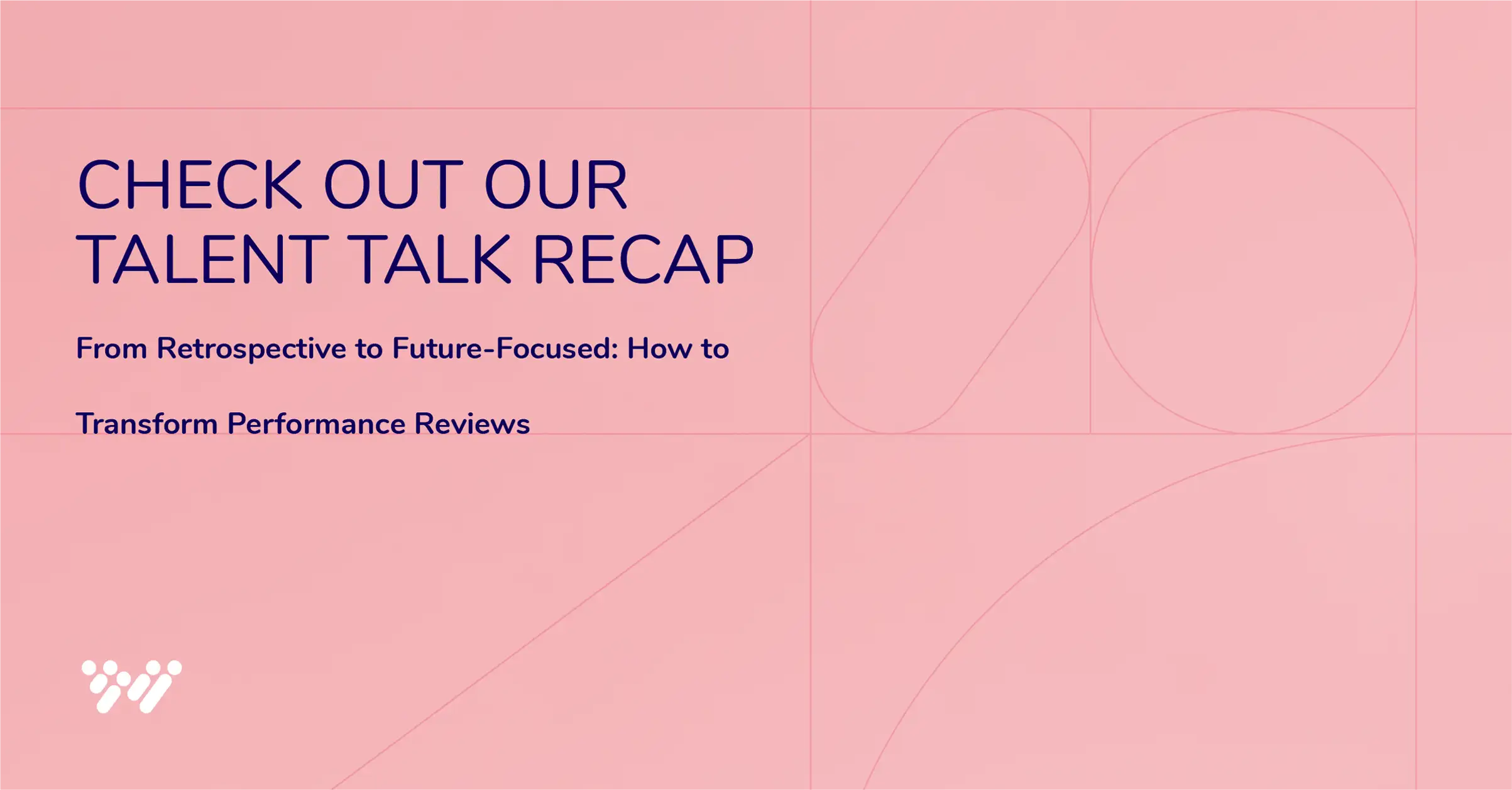For businesses today, change, transformation, and reinvention are constants. Amidst so many unknowns, one thing has become increasingly clear: The skills and competencies needed for tomorrow’s workplace challenges are quickly changing — with an estimated shortage of 85 million skilled workers over the next decade.
The future belongs to those who learn more skills and combine them in creative ways.
Robert Greene, NYT’s Best Selling Author
Organizations in various sectors, including technology and healthcare, face a shortage of skilled workers, and without investing in employees’ skills and competencies, organizations risk falling behind. This underscores the importance of professional development, an employee development process that helps employees grow in ways that benefit both the organization and employees’ careers. So, what is professional development, what are its benefits, and how can organizations implement effective professional development programs? Let’s dig deeper to find out.
What Is Professional Development?
Professional development is an umbrella term that encompasses the various processes of improving employees’ skills, competencies, and knowledge to perform better in their jobs or prepare for future roles. It isn’t necessarily confined to traditional on-the-job training but embraces various learning methods, including work-related activities, extracurricular pursuits, and non-work experiences, like volunteering or attending conferences. This multifaceted approach keeps employees updated on industry trends while encouraging fresh perspectives and real-life experiences.
Due to the effectiveness of this multifaceted approach, many businesses employ the 70-20-10 learning model, a scientific approach to learning where 70% of learning comes from experiential, on-the-job training, 20% from peer interactions, and 10% from formal training, like seminars or courses. This model defies a one-size-fits-all professional development definition and, instead, embraces the reality that professional development is a continuous journey of growth, adaptation, and learning, empowering employees to excel in their current and future roles.

Why Is Professional Development Important in the Workplace?
- Foster Company Culture
- Improve Employee Performance
- Promote From Within
- Raise Employee Retention Rates
In its 2023 Future of Jobs Report, the World Economic Forum estimates that 44% of workers’ skills will be disrupted in the next five years, with cognitive skills reported as growing in importance most quickly (which, in the age of AI, highlights the heightened importance of complex problem-solving in the workplace).
The importance of professional development lies in its benefit to both employees and employers. Employers need up-and-coming skills. It’s as simple as that. And employees directly benefit from their employers’ investments in their skill sets.
93% of CEOs who introduce upskilling programs see increased productivity, an improvement in talent acquisition and retention, and a more resilient workforce. — “Upskilling’s impact on learning, talent retention and talent acquisition,” PwC
But there’s also the matter of company culture — a major focus on professional development goes hand in hand with a high-performing culture. According to The Conscious Leadership Group, organizations can exist in one of two states: stagnate and resistant to change or adaptable with a thirst for knowledge and improvement. Which do you think fosters better long-term results?
However, this culture can’t come from leadership alone. Employees also need to play their part by practicing self-awareness, committing to their growth, and acknowledging their mistakes, all pivotal to professional growth. Organizations that aim to nurture low-ego, highly self-aware individuals consistently challenging their boundaries are the ones reaping the benefits of professional development. Let’s look at a few of these points in closer detail.
Foster Company Culture
A culture of lifelong learning brings people together, encouraging openness to diverse viewpoints and comfortability with being wrong. Take these insights from Deloitte: Organizations with a strong learning culture are 92% more likely to innovate, 52% more productive, 56% quicker to market with their products and services, and 17% more profitable. Furthermore, they enjoy higher engagement and retention rates, scaling up by 30-50%.
An organization thrives when its people commit to their personal growth and development. Culture is rooted in mindsets, and cultivating a professional growth mindset is the cornerstone of a positive work culture. The real power of professional development, when scaled across the organization, lies in its ability to permeate every corner of a business, transcending job levels and business units.
Improve Employee Performance
What is professional development in the context of work performance? First, professional development offers a clear pathway to career advancement, motivating employees to excel.
Think about it like this: Managers and employees in a performance review can choose to reflect on past performance and hope for future success. Or, instead, they can center their performance discussions around professional development using multi-measure talent assessments, shifting the conversation from past to future.
Professional development also equips employees with new skills and helps refine existing ones. It keeps them up-to-date on industry trends and technologies, enabling informed decision-making and effective contributions. It also broadens their perspectives, enhancing problem-solving and collaboration. In a time when HR is being asked to do more with less, helping employees grow and accomplish more is paramount.
Promote From Within
While hiring is undoubtedly crucial, promoting from within holds equal weight, particularly during economic constraints or labor shortages. This is when relying on the dedication of your existing talent becomes crucial — and incredibly cost-effective.
Research suggests that the cost of recruiting a mid-career software engineer (who earns $150,000-$200,000 per year) can be $30,000 or more including recruitment fees, advertising, and recruiting technology expenses. This new hire also requires onboarding and has a potential turnover of two to three times higher than an internal recruit. By contrast, the cost to train and reskill an internal employee may be $20,000 or less, saving as much as $116,000 per person over three years.
Rethinking the Build vs. Buy Approach to Talent,” Josh Bersin
In a rapidly changing world, businesses can’t afford to passively observe their employees’ development. Attracting and retaining high achievers involves providing avenues for their growth. In addition, effective professional development programs go further by recognizing the value of all employees, not just high-performers. They identify and nurture workers’ role-critical competencies, which is pivotal in cultivating a pool of promotable talent.
This approach is indispensable in today’s fiercely competitive landscape, ensuring all employees, regardless of their current positions or backgrounds, have opportunities to advance, contribute to the organization, and remain dedicated to its long-term success.
Curious how much a bad hire could cost your organization? Check out our ROI calculator.
Raise Employee Retention Rates
One of the core benefits of professional development is retaining employees within your organization for extended periods, a critical aspect of HR. On-the-job professional development is a near-perfect solution to the challenges facing companies today. A survey by the ExecuSearch Group underscores its significance: A staggering 86% of professionals consider changing jobs if a new company offers more professional development opportunities.
The message is clear: Professional development is a recurring priority for employees. They seek growth, advancement, and personal development when choosing an organization. And with today’s skills deficits and labor shortages, everyone must prioritize their development. Thus, if employees lack opportunities in your organization, it’s no surprise they seek growth elsewhere.
How to Promote Professional Development for Employees
Now that we’ve addressed the pressing question, “Why is professional development important?” it’s time to move on to the next critical topic: How do you make professional development accessible to your employees?
Here’s a secret: It doesn’t have to cost an arm and a leg. The key lies in making professional development personal and accessible. In other words, it should be tangible, meaningful, and directly tied to your employees’ roles and individual growth paths. For instance, a sales rep might receive training focused on new sales techniques, while a digital marketer could have sessions on the latest social media trends. Even more important is the development of role-critical power skills. So, similarly, a digital marketer could develop their organizational and planning skills, while a salesperson could develop skills like enterprising work and assertiveness. All of this would be accessible in a self-paced performance development interface that any employee can use.
Encourage Open Communication
Open communication acts as the conduit for employees to express their career aspirations, identify skill gaps, and discuss growth areas. Assessments that offer insights into strengths, weaknesses, and opportunities for professional growth serve as the basis for these discussions. This input is instrumental in tailoring development opportunities to individual needs.
Open communication also guides resource allocation for professional development. Involving employees directly in discussions about the tools and opportunities they find most beneficial helps organizations make strategic decisions on the avenues to explore.
Bring in External Speakers
In the 70-20-10 learning model, with formal education at just 10%, external speakers straddle the line between formal training and on-the-job learning. When executed thoughtfully, this approach can be highly engaging and directly impact role-specific development.
Guest speakers, whether professional speakers or industry experts, bring unique perspectives and rich experiences. Their insights give employees fresh ideas and elevate the organization’s overall development programs. Most importantly, inviting an external voice into your professional development program allows employees to learn from a different angle, a cornerstone of effective workplace learning.
Host Wellness Programs
Professional development goes beyond the workplace, focusing on personalization and genuine care for employees. It’s about bridging the gap between employees’ professional and personal lives and recognizing how this connection enhances performance at work.
Consider Salesforce’s commitment to mental health and well-being. Their five-pronged approach covers therapy, coaching, personalized care, substance use rehabilitation, time off, and stress management, offering multifaceted support to their employees. Intuit, similarly, boasts a comprehensive initiative that provides self-paced yoga and meditation sessions, access to wellness coaches, and the convenience of scheduling counseling sessions. It’s a testament to their dedication to nurturing employees’ holistic well-being.
Create a Mentorship Program
Mentorship is highly effective at motivating employees and linking them to resources for professional development. Even CEOs recognize the value of mentorship, with 86% acknowledging mentors as crucial to their career achievements.
What’s the secret sauce in mentoring? Mentors provide custom guidance, unwavering support, and insights that boost employee performance. Tools like Wonderlic Develop can offer additional insights into employees’ capabilities, behaviors, and interests, expediting learning and enhancing professional development.
Build World-Class Talent With Wonderlic Develop
Professional development is the bedrock of resilience and continuous growth. When learning is seamlessly woven into our daily routines, it ceases to be an afterthought and becomes an integral part of company culture. Even small changes in how we approach our daily tasks can significantly advance our development journey.
That’s why, at Wonderlic, we’ve dedicated our passion and expertise to connecting professional development with performance management. It starts before a candidate is hired by selecting the right candidates based on a multi-measure assessment. Once you hire the right candidate, Wonderlic Develop gives employees insights into their role-critical competencies and how they can improve them, all in a self-paced learning portal. This scalable, job-specific professional development helps boost retention and performance and fosters a culture that truly invests in its employees’ professional growth.
Take the next step to elevate your team’s performance today by signing up for a free demo of Wonderlic Develop.






